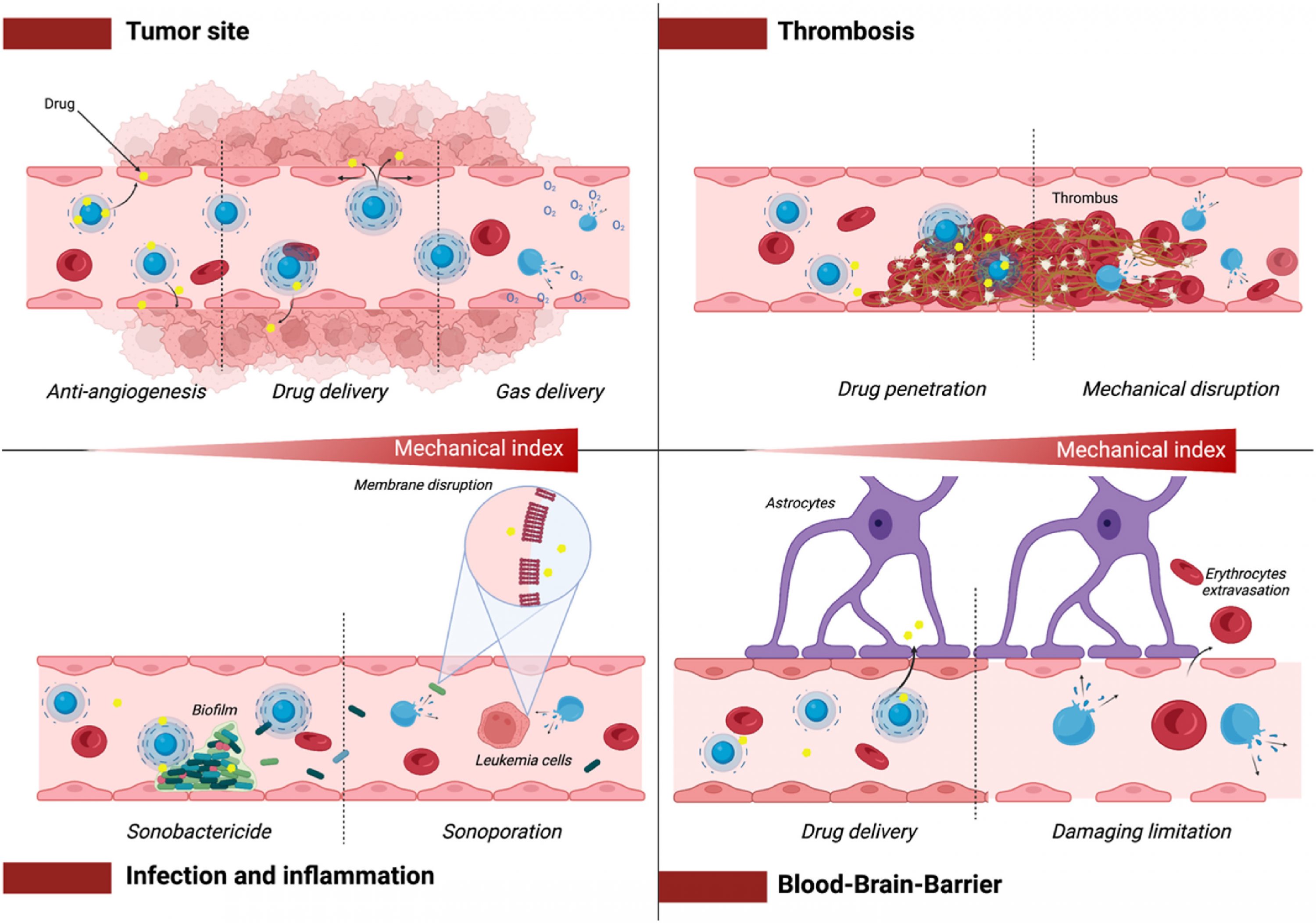After an insightful trip to the hospital for the Stem Cell and Regenerative Medicine Masterclass, I discovered a new branch of biomedical engineering that I’d never considered: using bubbles in medicine! Now I know what you’re thinking, but these aren’t bubbles that you’d make from soapy water and by waving a wand around vigorously in the air. Instead, these bubbles are microscopic, made from a monolayer of phospholipids that self aggregate to form a sphere with a gas core. PhD student Aya Ben Issa demonstrated how to create these bubbles, alongside explaining some potential uses, including her own research focus, using them to break up biofilms. This got me thinking, what other uses for microbubbles are there?
Microbubbles for Imaging
Primarily, microbubbles are used for contrast enhanced ultrasound in medical imaging. Sounds like a mouthful, but in reality, it essentially improves the imaging quality by creating a better distinction between the tissues and the injected microbubbles. I’ve included a video so you can have a look for yourselves:
Microbubbles for drug delivery
When the idea of microbubbles was first introduced, my mind initially went to using them for delivering drugs. And why not? These micro compartments seemed like the ideal packaging for doing exactly that. With further research into the topic, I discovered that I wasn’t the only one who thought the same. Our current module lead, Professor Nicholas Evans has published an article on using them to deliver oxygen to tissues. This has shown promise for bone cancer treatments by reducing metastasis. This supports my initial thought; that things can be delivered within the bubble. But what about on them? Well, once again, studies have indicated that insertion of drugs into the microbubble shell in addition to attaching site-specific ligands have been show to allow targeted delivery of drugs to areas where pathologies have occurred.
When do Ultrasound and Microbubbles Go Hand in Hand?
So, you’ve put your drugs within your microbubbles and injected them into the patient. They’ve travelled to the target site. Now what? You need to actually get your drugs out of the bubble and into the tissue. This is where ultrasound comes in. Ultrasound is able to create oscillations and compressions within the shell of the microbubble, causing a large dose of drug to be released. In addition to the microtubules being the delivery agents of the drugs, they can also be used as mechanical agents. The ultrasound once again causes oscillations, this causes transient, miniscule disruptions in the plasma membranes of the cell, allowing drugs to once again enter the cell. This process is known as sonoporation.
Examples of Uses
In summary of the topics I have suggested above, the image below highlights some of these applications, from drug delivery to sonoporation, as well as some other potential applications.

What do I think?
In my opinion, the application of microbubbles have great potential. Of course, further studies will have to be done to fully understand the extent to which we can use this technology. There are still limitations when it comes to the therapeutic uses of these microbubbles in addition to some novel ideas such as Aya’s application of them to disrupting biofilms. What do you think? Can you think of any other uses of these microbubbles?
Want some more info?
Use the hyperlinks in this article for a more in-depth understanding of the topic I have discussed today! 🙂
This was a good, well-structured and engaging blog. Make sure to adequately reference your sources including your images.